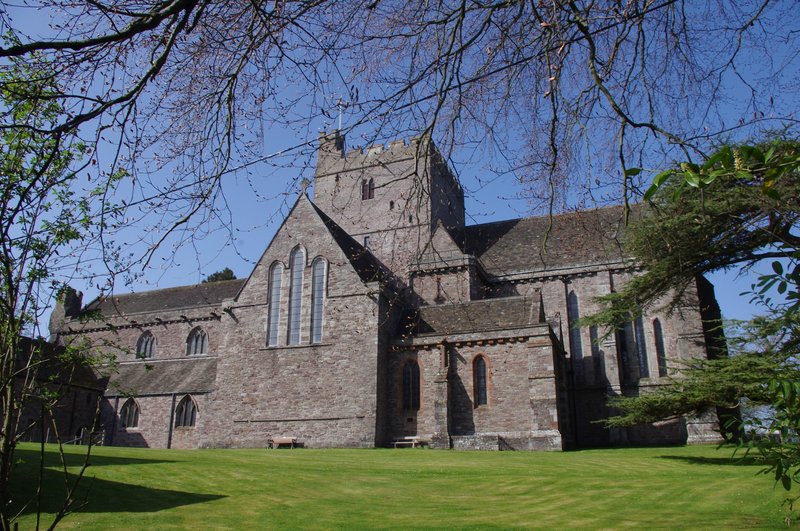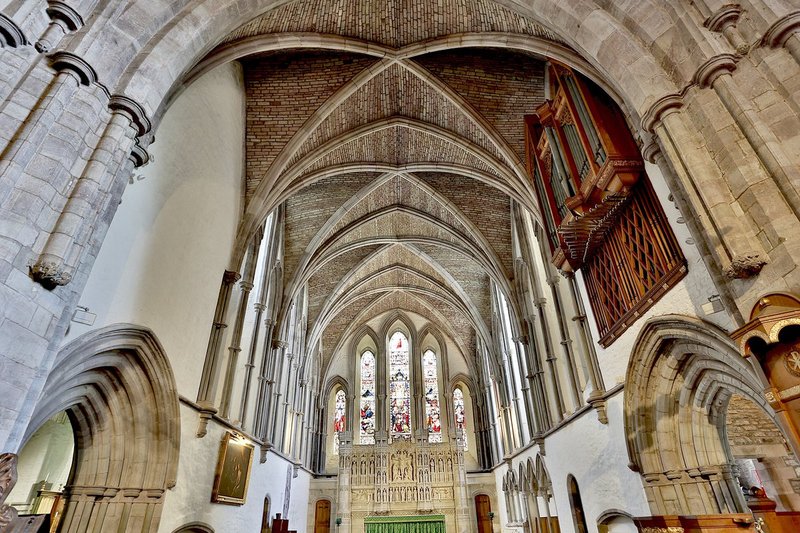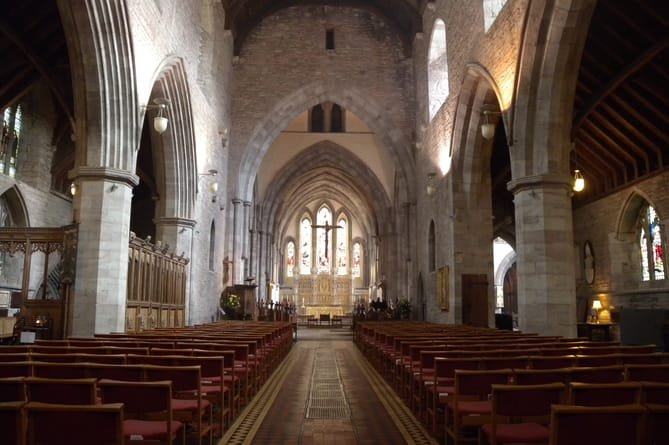Contact
Opening Times
Open to the public daily from 9:00 - 18:00.
The Hours café is open from Wednesday -Saturday from 10:30 – 15:30 and on Sunday from 12noon – 15:00.
Facilities
Parking
Parking available nearby



Brecon Cathedral was originally founded as a Benedictine Priory in 1093 and become a parish church during the dissolution of the monasteries in 1537.
The Priory Church of St John the Evangelist became Brecon Cathedral in 1923 (at the creation of the Diocese of Swansea & Brecon, when the Church in Wales became a separate Province of the Anglican Communion from the Church of England).
Most of the Cathedral and the other buildings in the Close date from the 14th century. The Thomas Coke memorial is on the north wall - note one of the signatories is the Rev James Buckley. Read the text of the memorial below.
Other highlights include a Celtic font older than the Cathedral, William Strutt's famous painting 'Peace', and the Colours rescued from the Battle of Rorke's Drift in 1879.
Text of the Thomas Coke memorial, Brecon Cathedral
Sacred to the memory of The Revd. Thomas Coke, LL.D.,
Of Jesus College, Oxford, who was born in this Borough the 9th day of September, A.D. 1747. Was one of the Common Council and in 1770 filled the office of Chief Magistrate with honour to himself and equal benefit to the public. After a zealous ministry of several years in the Established Church, in 1776 he united himself to the Revd. John Wesley, M.A, and preached the Gospel with success in various parts of Great Britain and Ireland. To him were confided the Foreign Missions of the Methodists, in support of which he expended a large part of his fortune, and with unremitting vigour encountered toils and self-denial, which the Christian world beheld with admiration.
By the Blessing of God on the Missions to the Negroes in the West Indies, commenced by him 1786, a foundation was laid for the civilization and salvation of the degraded class of human beings. To the Negro race upon their native continent, as well as in the islands of their bondage, his compassions were extended, and he set the first example in modern days of efforts for the spiritual emancipation of Western Africa.
After crossing the Atlantic eighteen times on his visits to the American Continent and the West Indian Colonies in the service of the souls of men, his unwearied spirit was stirred within him to take part in the noble enterprise of evangelizing British India. He sailed in 1813 as the leader of the first Wesleyan Missionaries to Ceylon. But this "burning and shining light" which in the Western World had guided thousands into the paths of peace, had now fulfilled its course, and suddenly, yet rich in evening splendour, sunk into the shadows of mortality.
He died on the voyage the 3rd of May, 1814, and his remains were committed to the great deep, until the sea shall give up her dead. His days were past, but his purposes were not broken off, for the Mission which he had planned was made abundantly to prosper. The same love of Christ which made him long advocate and the pattern of exertions in behalf of foreign lands, constrained him also to works of pious charity at home. Into many neglected districts of England, Wales and Ireland, the means of grace were carried by his private bounty or through his public influence, and his praise is in the Gospel throughout all the Churches.
This monument was erected A.D. 1829, at the expense of the ministers and missionaries with whom he was united, as a record of their respectful gratitude for the disinterested services, the eminent usefulness, and the long, tried, and faithful attachment of their now glorified friend, by the appointment and under direction of
the Revd. T. Roberts, M.A. and the Revd. J. Buckley.
Brecon Cathedral
Cathedral Close, Brecon LD3 9DP